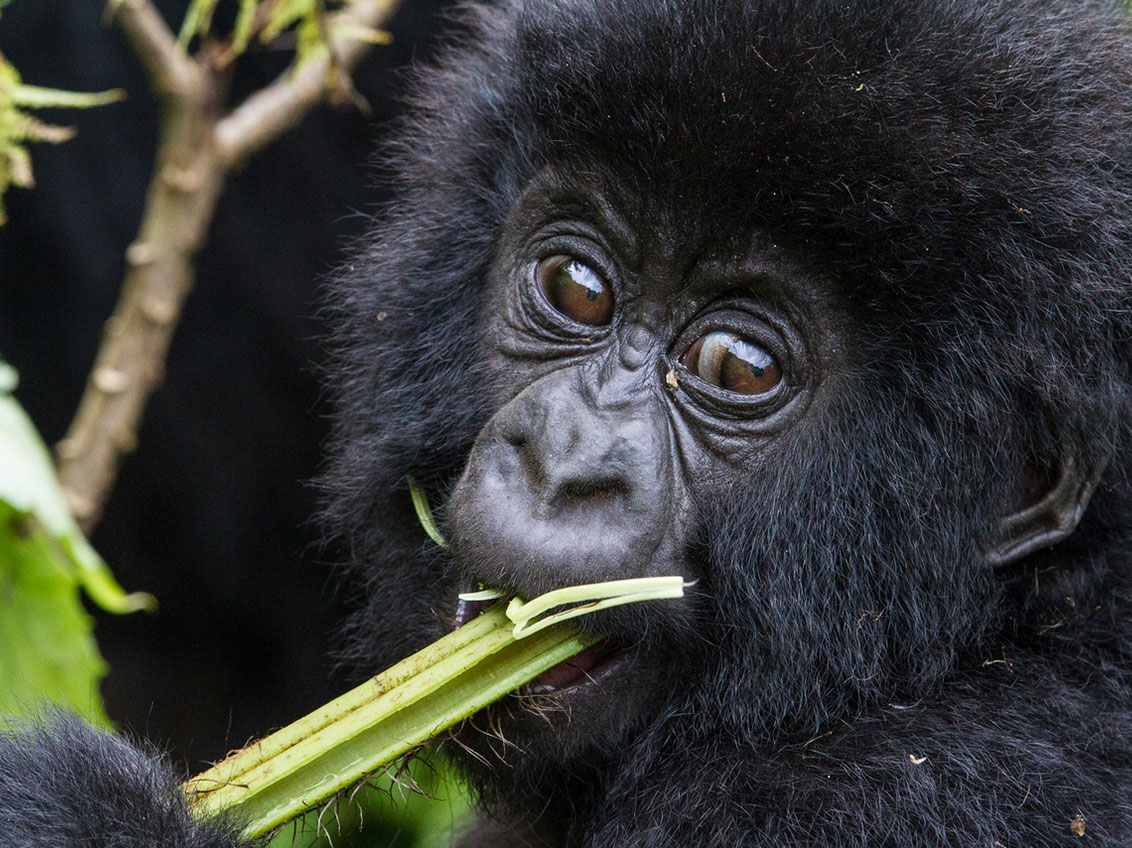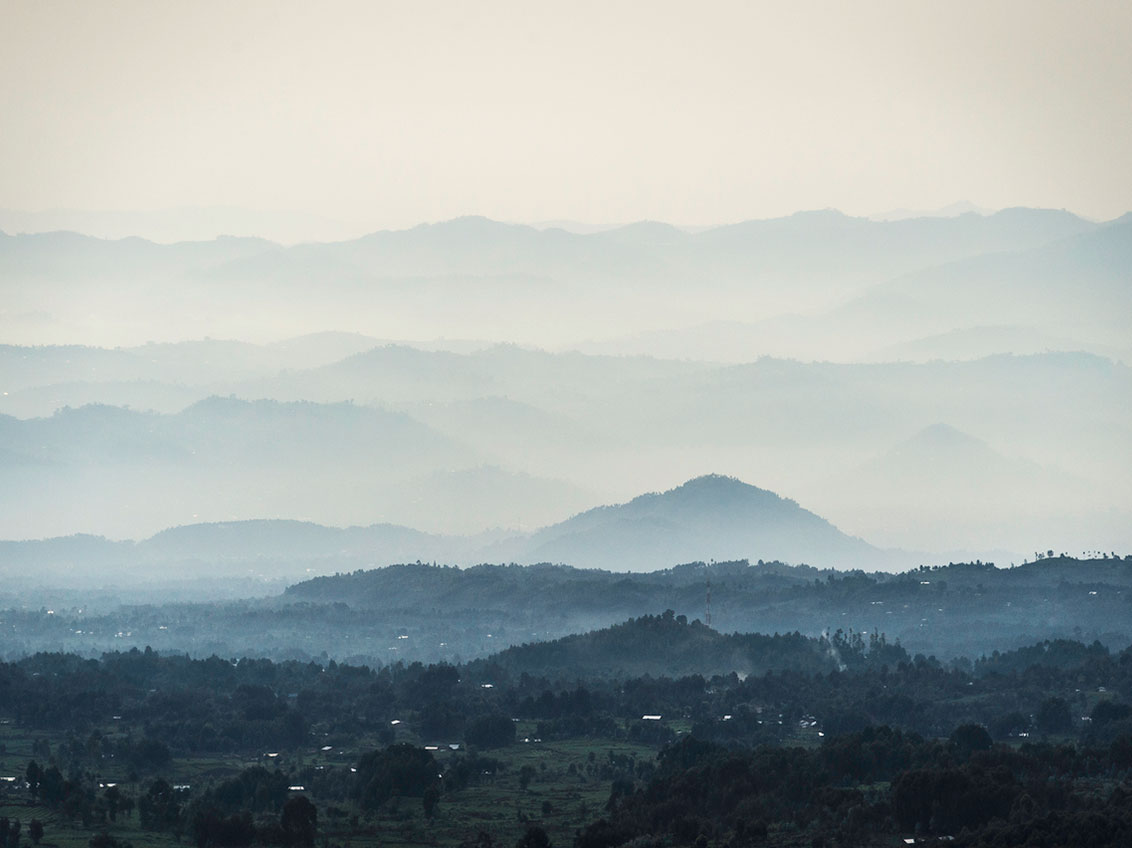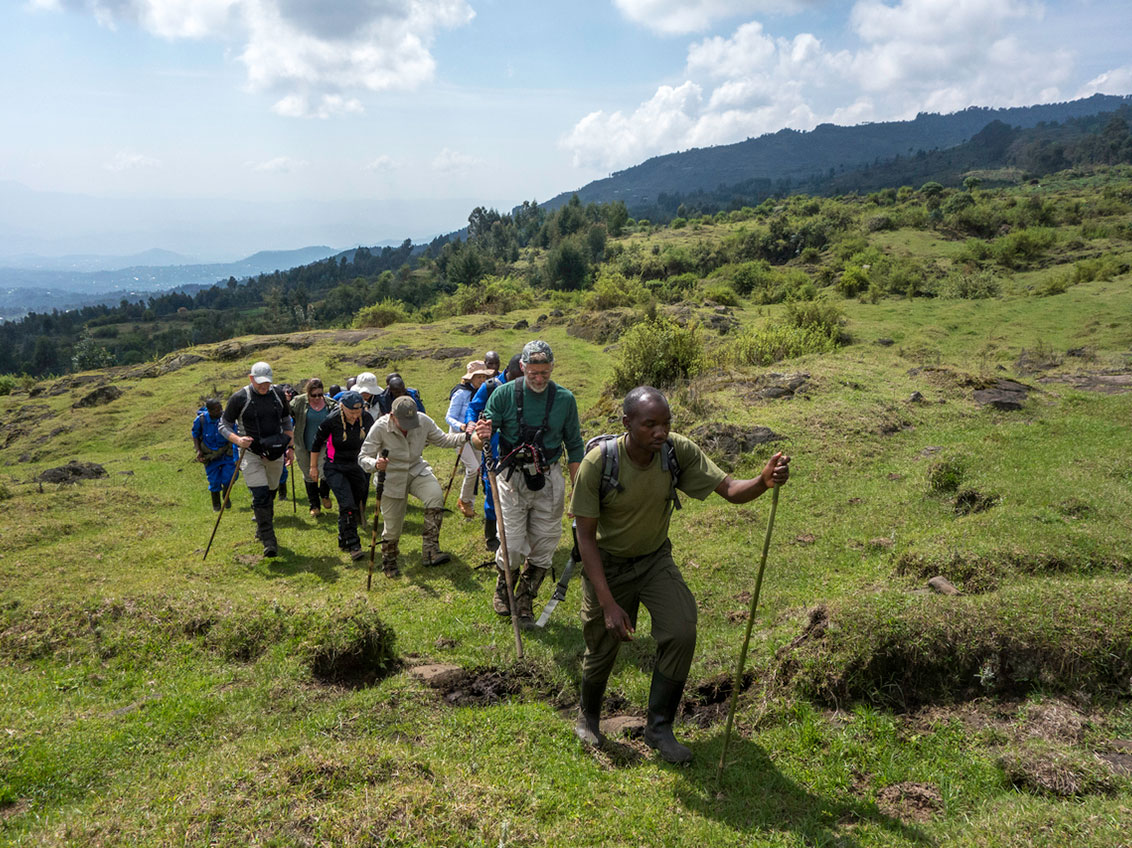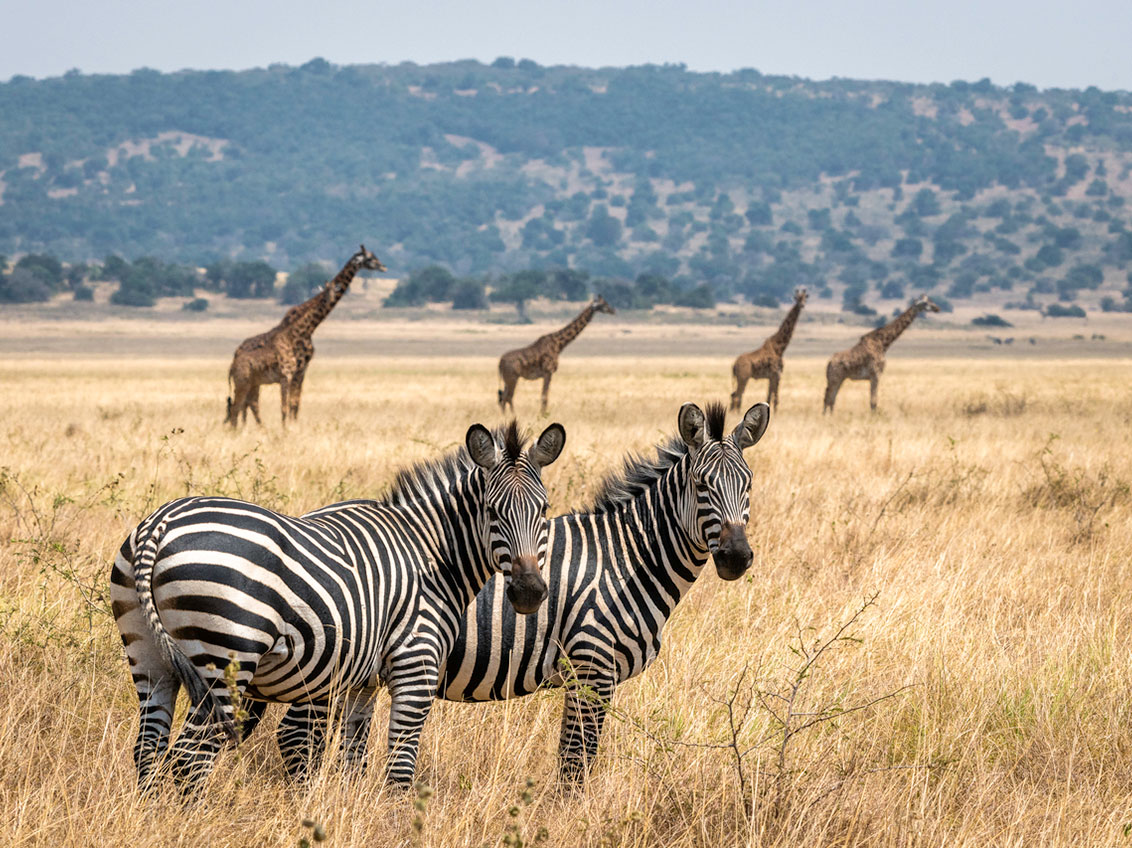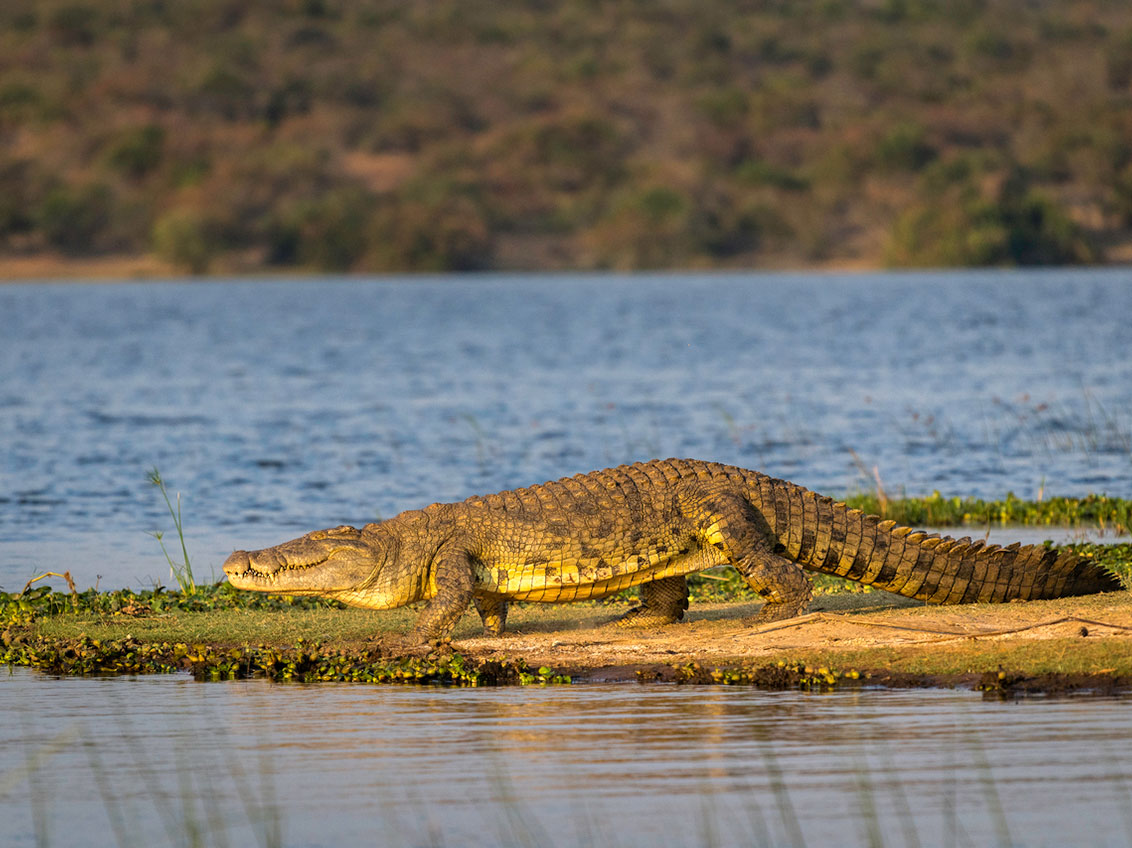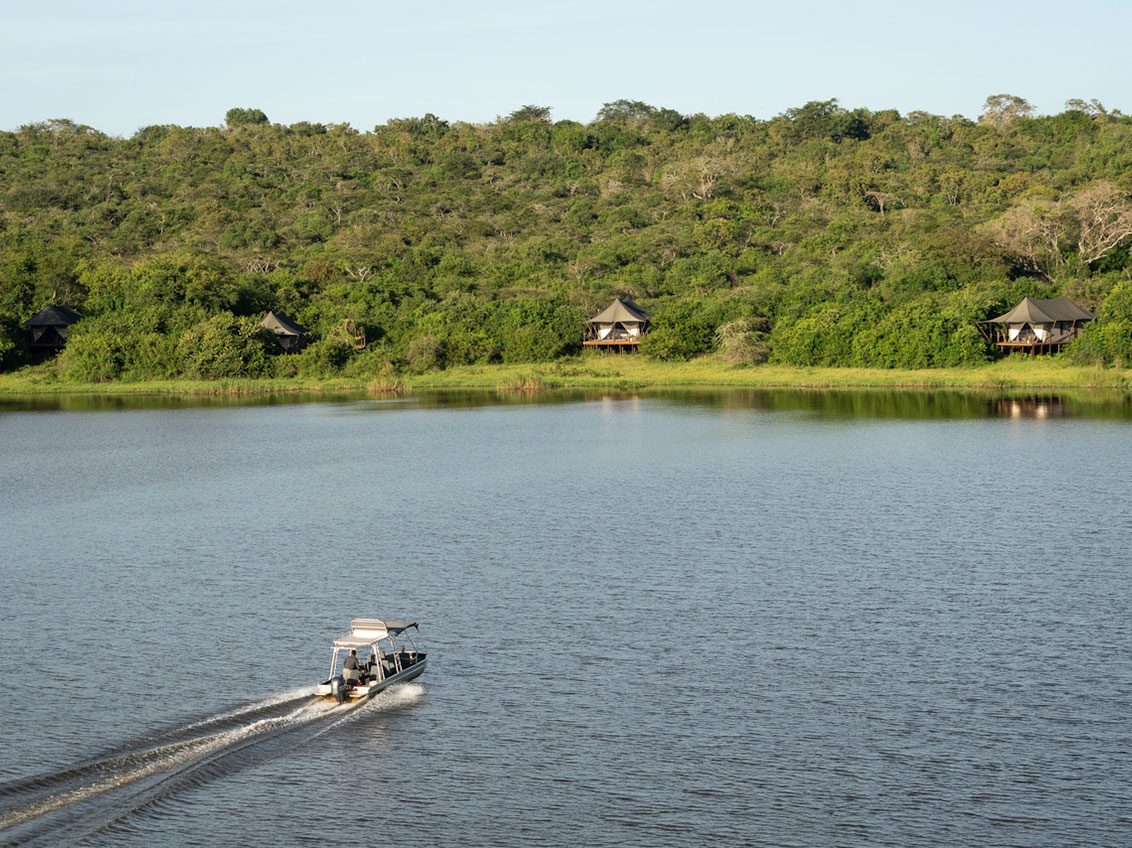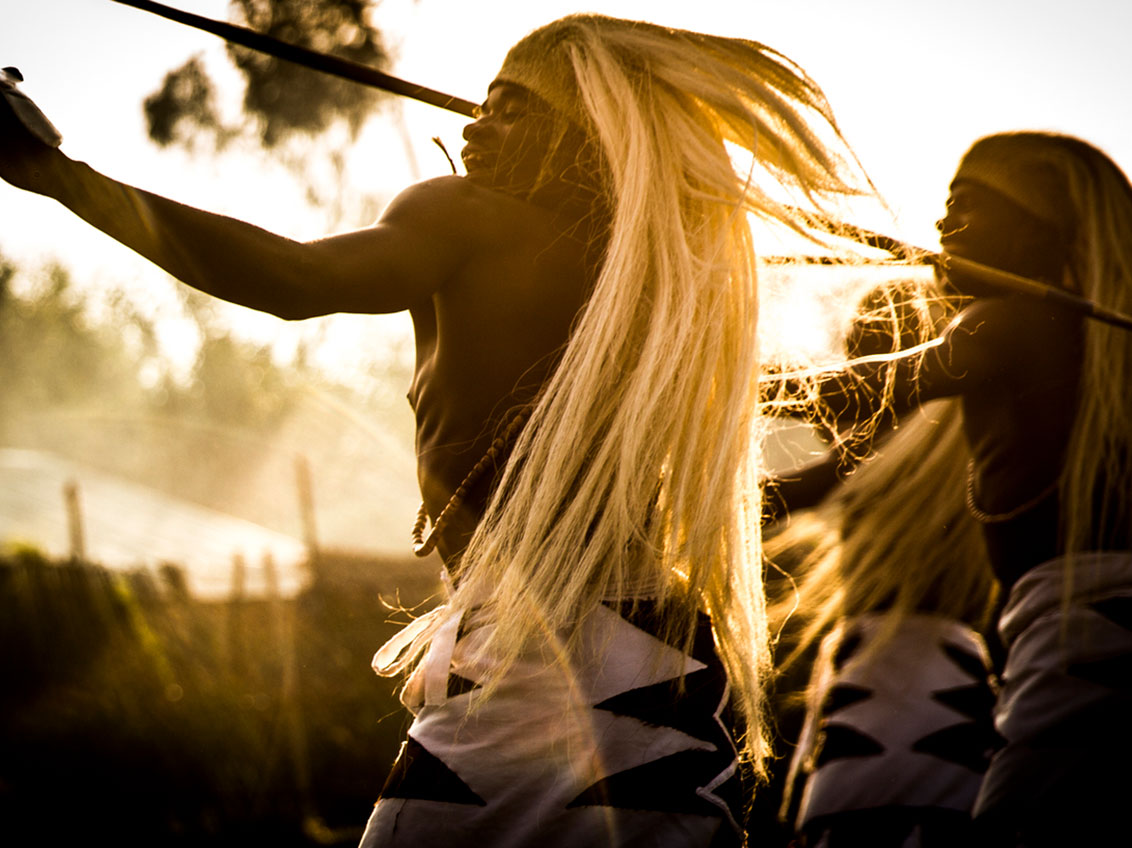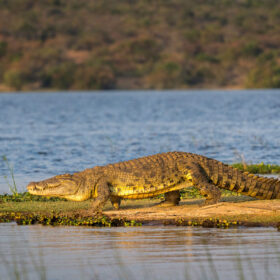On safari in Rwanda
The country is ideally suited for a somewhat shorter trip, but one packed with variety. In about 10 days you can already see a lot of Rwanda, including safari, culture and of course the mountain gorillas and chimpanzee in the north and south-west.
We offer accommodations in all major destinations in Rwanda, and for on-site transportation we use a regular private guide/driver to accompany you throughout the trip. Another wonderful option is to combine Rwanda with a safari in Tanzania and possibly stay in Zanzibar. In practice, it then usually turns out that Akagare National Park in Rwanda is skipped because Tanzania offers abundant safari opportunities. The stay in Rwanda is then usually 7 or 8 days, after which the flight continues to Serengeti or Arusha.
One of the best activities is a gorilla trek in Volcanoes National Park. Here you will hike in a small group with a local guide to one of the gorilla families. Cost for the permit is USD 1500 per person per ‘Trekking’. Besides the gorillas, the Golden Monkeys are also worth a visit. This endangered monkey species can be found in the bamboo forests of Volcanoes, and can also be reached by trekking with a local guide.
The Canopy Walkway in Nyungwe National Park, where a 200-meter suspension bridge carries you between the treetops, is also well worth a visit.
Nature reserves Rwanda
Volcanoes National Park
Volcanoes National Park is located in northern Rwanda, in the stunning Virunga Mountains, a mountain range stretching across Rwanda, Uganda and Democratic Republic of Congo. Created in 1925, Volcanous National Park covers about 125 km2, in which as many as 6 (dormant) volcanoes can be found. The area is best known for its famous mountain gorillas and the pioneering research on these animals by scientists such as Dian Fossey and George Schaller. The main purpose of creating Volcanoes National Park was and is to protect the gorillas around Rwanda’s three volcanoes Karisimbi, Bisoke and Mikeno from poaching. Although the mountain gorillas are continually under pressure from encroaching society, the protection has helped ensure that a good number of gorilla families can be admired in the park today.
Dian Fossey
Perhaps the best known advocate for protection of and research on mountain gorillas is Dian Fossey, an American primatologist who conducted intensive research on gorilla families in Volcanoes for 18 years. Her book and the film of the same name, “Gorillas in the Mist,” were instrumental in protecting the animals. In 1985, Dian Fossey was murdered at the research station in Rwanda; a case that has never been cleared up. Her final resting place is in the heart of the Volcanoes and can be reached via the beautiful but challenging “Dian Fossey Tomb Trail,” a 2-hour hike up steep slopes where orchids, many birds and even gorillas can be seen.
Akagera National Park
Akagera is located in the north-western part of Rwanda. The park was declared a National Park back in 1934, making it one of the oldest National Parks in Africa. Akagera is a savanna park with many grasslands, as well as lakes, vegetated areas, the Akagera River and huge papyrus swamps. The park is home to elephants, lions, buffalo, giraffes, crocodiles, hippos, leopards, hyenas and many cervids and smaller game. For birders, Akagera is a true paradise, with nearly 500 different species observed. In its long history, Akagera has seen some thriving periods, but also many lows – poaching decimated many populations and in densely populated Rwanda, land is scarce, so the population moved further and further inside the park boundaries. Especially after the 1994 genocides, the large groups of refugees kept cattle in very large parts of the park, and farm fields kept advancing. This resulted in a drastic decision: in 1997 Akagera National Park was officially reduced by two-thirds to 1,120km2, and the vacant land was distributed to the population for settlement and cultivation.
In 2009, a new chapter in Akagera’s history began, for from then on the African Parks Foundation became involved in the park’s management and reconstruction. The goal was to restore Akagera as a savanna ecosystem by rehabilitating biodiversity, protecting wildlife, and building opportunities for sustainable tourism, thereby also supporting the local economy. Since then, the park has undergone a true metamorphosis and great successes are being achieved: a 120-km-long game fence forms a barrier to protect humans and animals from each other. Exotic plants are systematically removed, poaching has been virtually eliminated and animal populations are growing robustly. The crowning achievement is the most recent reintroduction of lions to Akagera.
Accommodation in Akagera
The largest accommodation in Akagera is the Akagera Game Lodge, but the experience of the park comes much better from Ruzizi Tented Lodge. This intimate safari camp has just 20 beds in total and overlooks Lake Ihema beautifully. A more adventurous option is to spend one or a few nights at Karenga Bush Camp. This semi-permanent camp offers a down-to-earth experience in the beautiful wilderness of Akagera.
Nyungwe National Park
Nyungwe National Park (pronounced Nju-enway) in south-west Rwanda is one of the few large and intact mid-mountain rainforests (1,600 – 2,000m) in Africa. The 1020 km2 park is home to a wide variety of flora and fauna. Different ecosystems can be found, including rainforest, bamboo forest, swamps. In fact, Nyungwe is the source of Africa’s largest rivers. The rain that falls in the eastern part forms the Nile, and the rain in the eastern part forms the Cono River. Nyungwe is particularly famous for the chimpanzees that live there. In all, as many as 13 different species of monkeys are represented. Among these are the Blue Monkey, Angola Colobus, Owl-faced monkey and L’Hoest’s Monkey.
Accommodation in Nyungwe
One of the accommodations we offer in Nyungwe is Nyungwe Forest Lodge. A beautiful lodge, situated among the tea fields and forests of Nyungwe.


